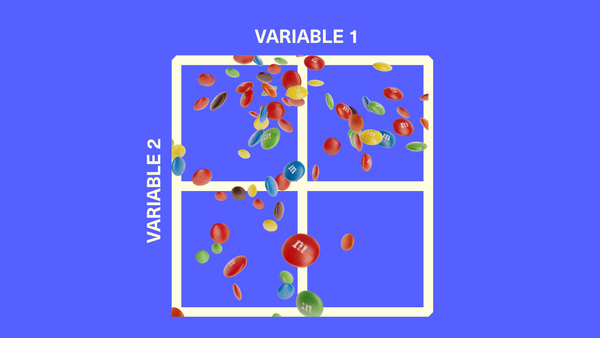How Can RMNs Tap Upper-Funnel Brand Budgets
Most retail media networks walk into agencies with the wrong pitch entirely. Massive reach numbers, demographic coverage, site traffic. Agencies don't care, and agencies are the gatekeepers of brand budgets.

RMNs are gazing longingly at the billions of dollars that consumer brands spend each year on top-of-funnel brand-building marketing campaigns.
As retail media spending slows, and retailers reckon with the concept that some of their retail media P&L might be borrowing – at least a little bit – from their existing trade and shopper marketing ad spend, the interest in tapping into that brand-building budget has heightened.
A giant pot of incremental money that doesn't seem as maniacally focused on specific measurement? Sign me up!
But as Viv Craske and Colin Lewis discuss on their most recent episode of the Retail Media Therapy podcast, it turns out, it ain't that easy.
Agencies are the Brand Gatekeepers
The path to brand budgets runs directly through advertising agencies.
"Brands rely on their agencies and their agencies are the people who they trust and trust the recommendations and insights," Colin says. "so a retail media network needs to have a strategy for how they're going to engage with agencies."
But most retail media networks walk into agencies with the wrong pitch entirely. They lead with the same deck they show advertisers: massive reach numbers, demographic coverage, site traffic. Agencies don't care.
Viv explains that retail media networks is they have to identify an agency proposition that's different to their standard retail media proposition.
What Agencies Actually Want
Viv shares an example from a client who's an RMN: an agency came to them saying they couldn't target pregnant consumers for a brand campaign. The retailer had exactly that audience segment—large, well-defined, and ready to activate.
That's the kind of specific gap agencies are looking for. Not broad demographic reach that they already have through programmatic platforms, but precise audience segments they can't easily access elsewhere. Geographic coverage in areas outdoor media doesn't reach. Behavioral data that DSPs don't have.
"What is the secret sauce that you have? Not the stuff that you as a retail media network want to push, but the stuff that the agency can't do?" Viv urges retailers. "So it's listening first and then building a proposition."
Agencies aren't looking for general reach. They're hunting for specific audience segments they can't access elsewhere, geographic coverage gaps that outdoor media doesn't fill, or behavioral data that programmatic platforms don't have.
Mirakl Ads is the only retail media solution designed for both 1P & 3P marketplace brands. Why does that matter?
Marketplace sellers demand a seamless advertiser experience that still offers full-funnel ad formats. And retailers need a flexible solution that allows you to scale your media business.
Colin adds critical context about how agency briefs actually work: "The agencies in theory should be looking dispassionately at all the options that are out there to reply to that brief. I would meet them and they would say, here's what our options are within that budget. And I would accept that because they're the experts."
This means your job isn't to force your way onto media plans. It's to position yourself as the obvious answer when the right brief comes through. But most RMNs do exactly the opposite:
"What's not important is going to them and saying, we've got 50% of the 18 to 34 year olds in our country, which is what most retail media pitches say to advertisers," Viv says.
"So if you say, oh, you can access our Meta accounts, or we already have a relationship with a connected TV provider, they [agencies] want to manage the pipes and the relationships with media partners. They just want your data and your audiences and your understanding of your shoppers."
The gatekeeping point is important. Agencies don't want you managing their media partnerships or locking data inside proprietary dashboards. They want clean data, clear audience segments, and the ability to pipe that data into their existing workflow—whether that's Trade Desk, DV360, or whatever DSP they're using. (Read more: DSPs Wanted: The Retail Media Revolution 96% of Advertisers Crave)
How To Engage Agencies As An RMN
So what's the actual playbook? Viv lays out a three-step strategy:
- Meet with retail media leads at the major holding companies to understand pain points and how they want to access data.
- Engage with retail media leads at the operating companies—these are your agency gatekeepers where you sell and refine your proposition.
- Build relationships with account leads and planners at those operating companies. This is where the real work happens: responding to briefs, potentially supporting speculative pitches, offering discounted media to prove value.
But just because there's just 3 steps, doesn't mean it's quick and easy. As Viv notes: "In the good old days it was liquid lunches, several hours spent meeting people and building relationships. You might need to help the agency win a speculative pitch. That might take you a lot of time, but might not get anywhere. But you need to build the relationship with the agency."
Now What
If you're a small retail media network, you need a dedicated person devoted to this initiative. Larger networks may need multiple people, each covering a holding company – dedicated brand marketing sales teams that actually understand how agencies work, not performance media sellers trying to figure it out on the side.
Bigger networks need multiple people covering each holding company and independent agency. This isn't a sales blitz—it's a six to nine month relationship-building project minimum. As Colin says, since the growth is starting to slow now, retailers need to be investing in this initiative now in order to get ahead of that revenue next year.
Most networks will skip this investment. They'll keep treating agency relationships as an afterthought while retail media growth flattens and the fight for incremental dollars intensifies. The networks willing to invest now—dedicated teams, six-month timelines, actual strategy—will build an offramp from the retail media doom loop. Everyone else will be stuck fighting over performance dollars with tighter margins.
Check out the Retail Media Therapy podcast for the full conversation.
Read more from me:






